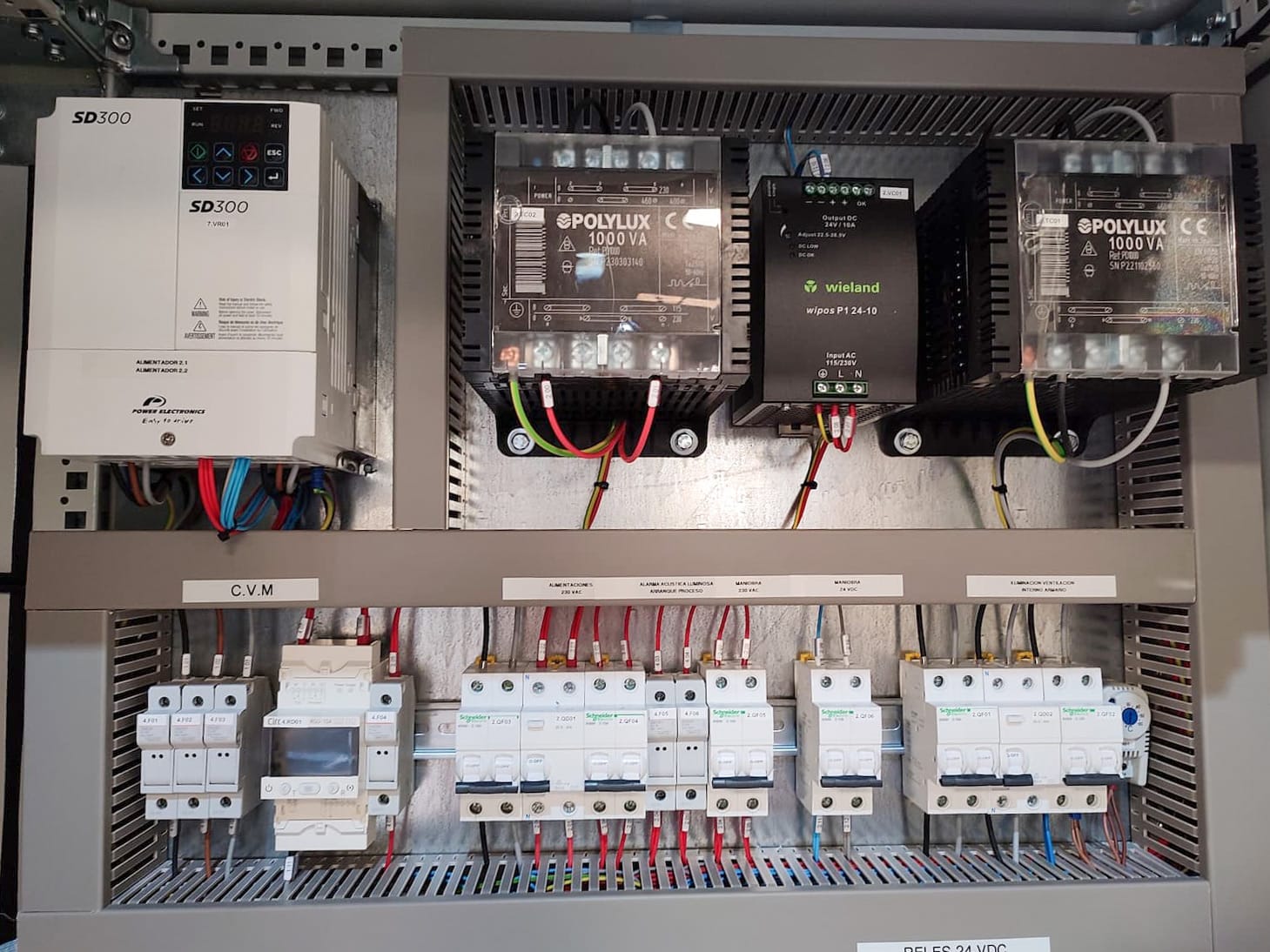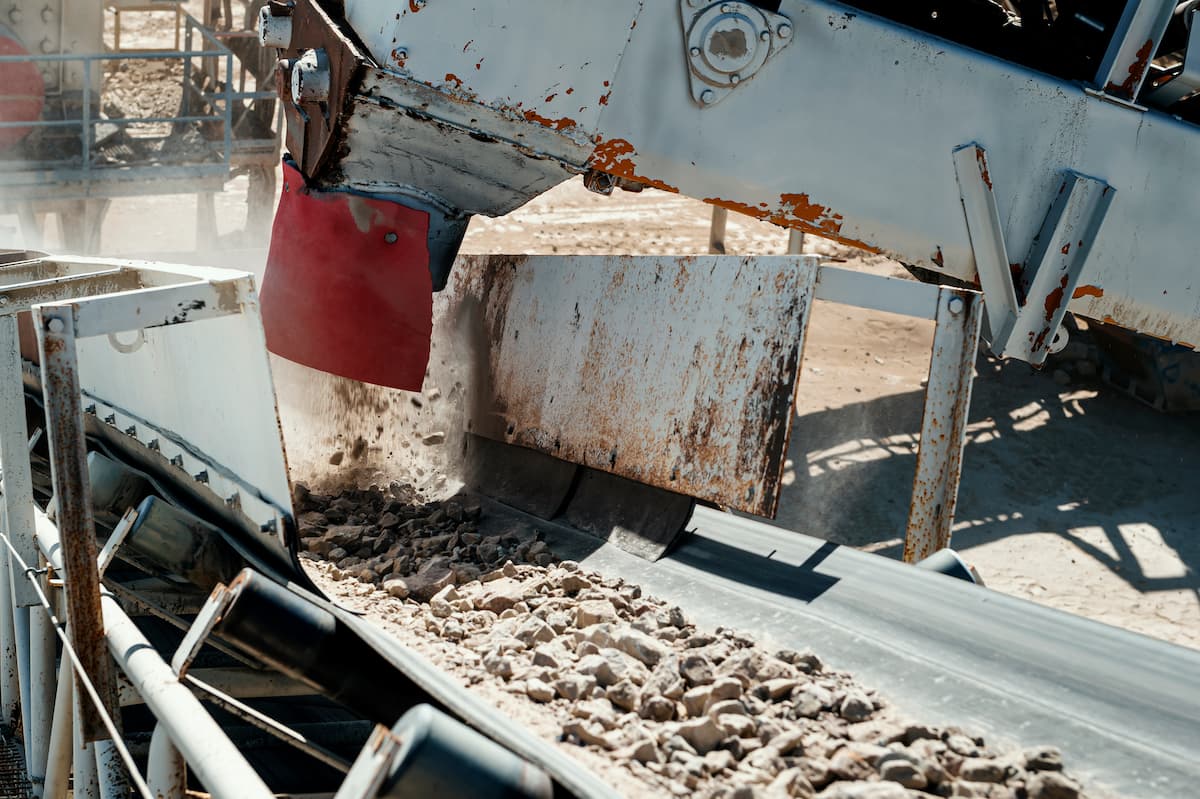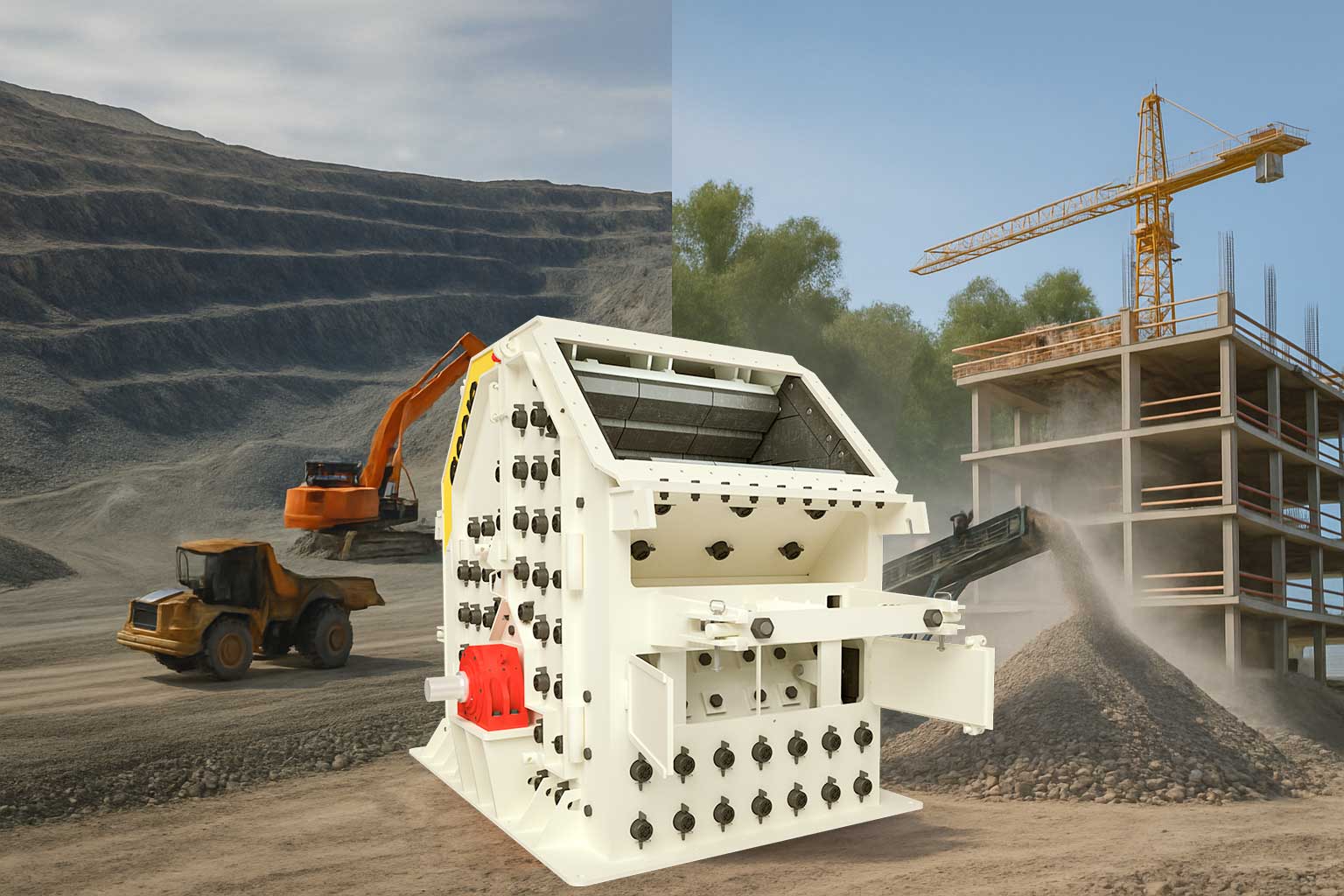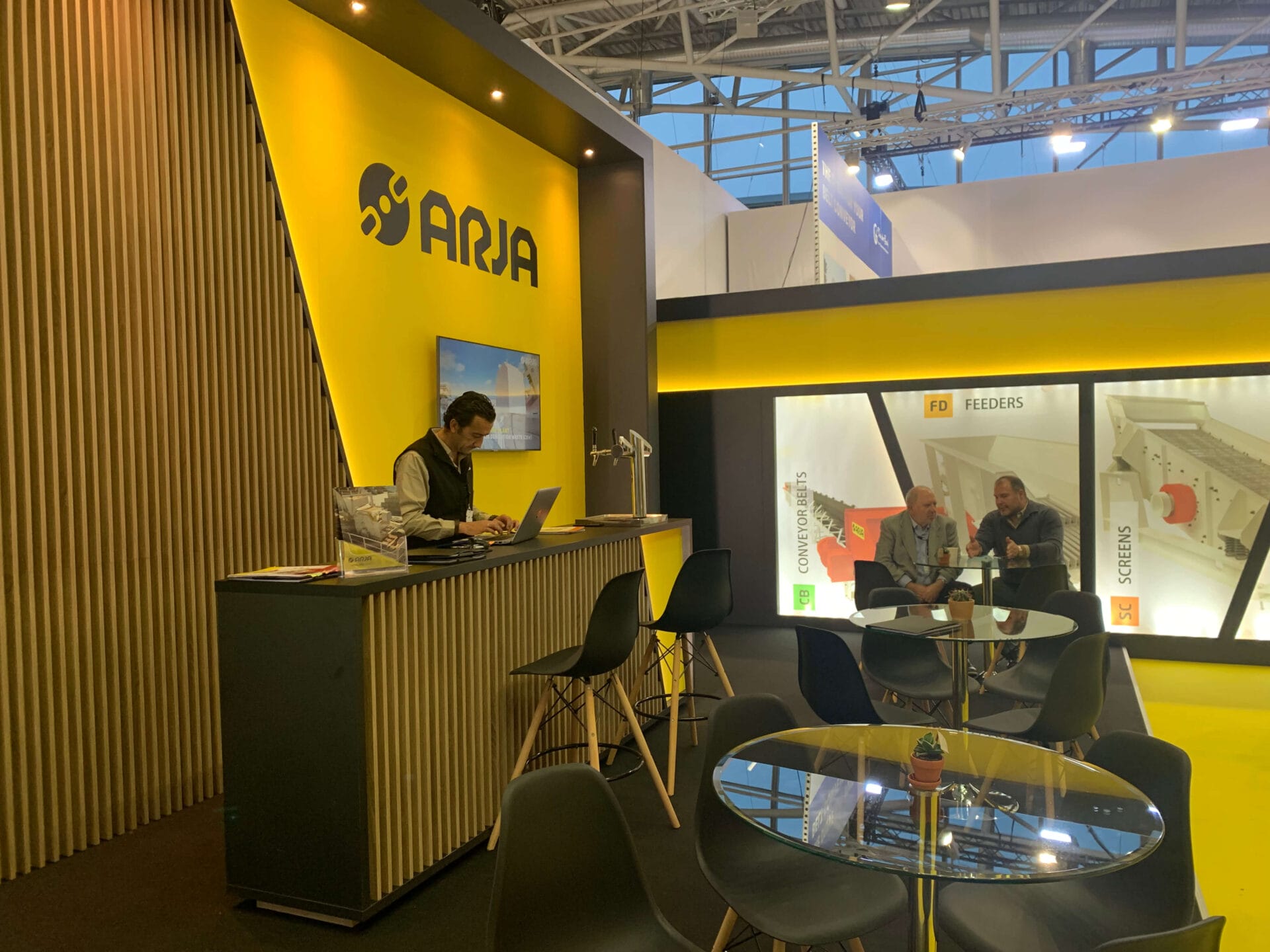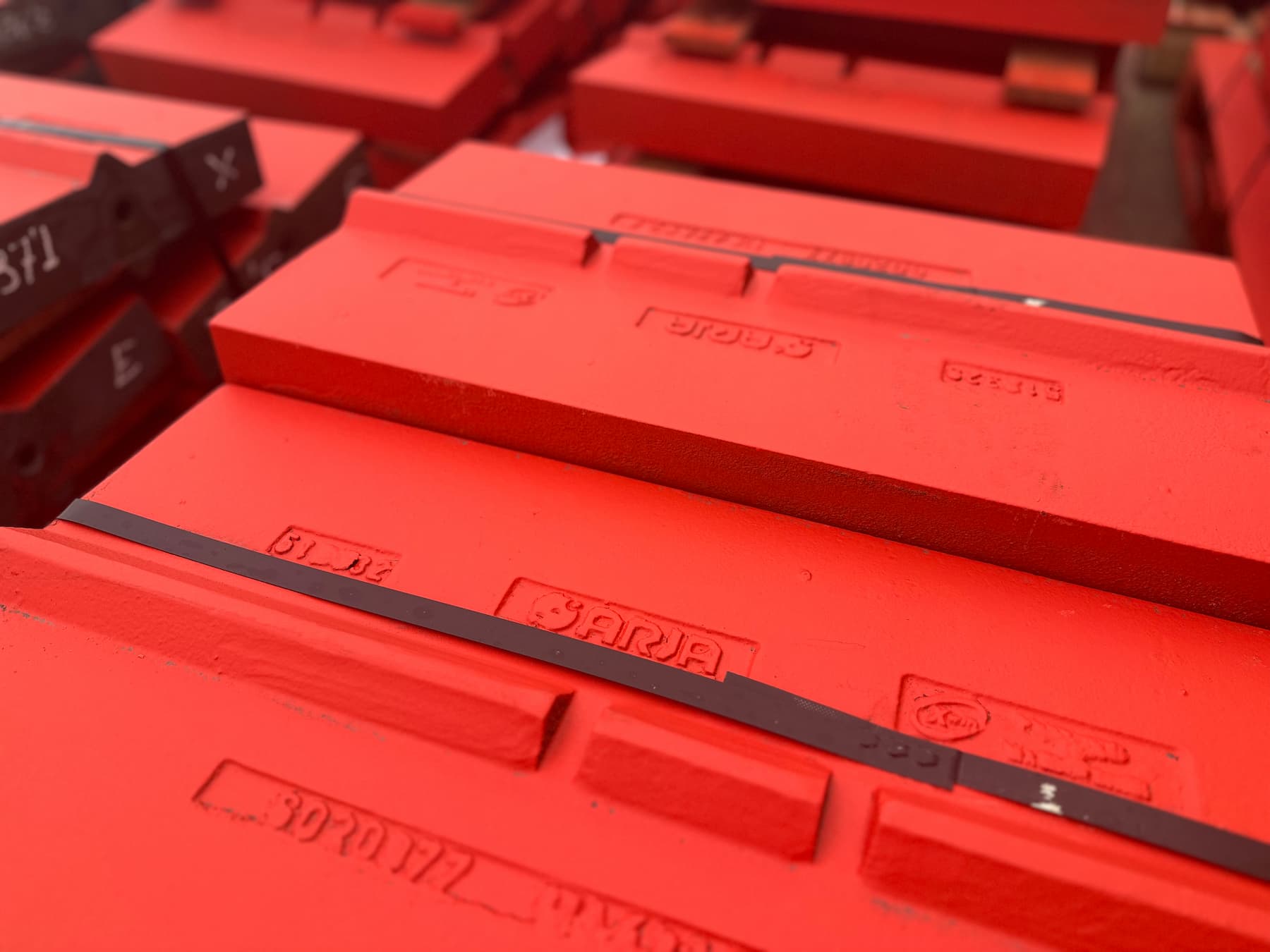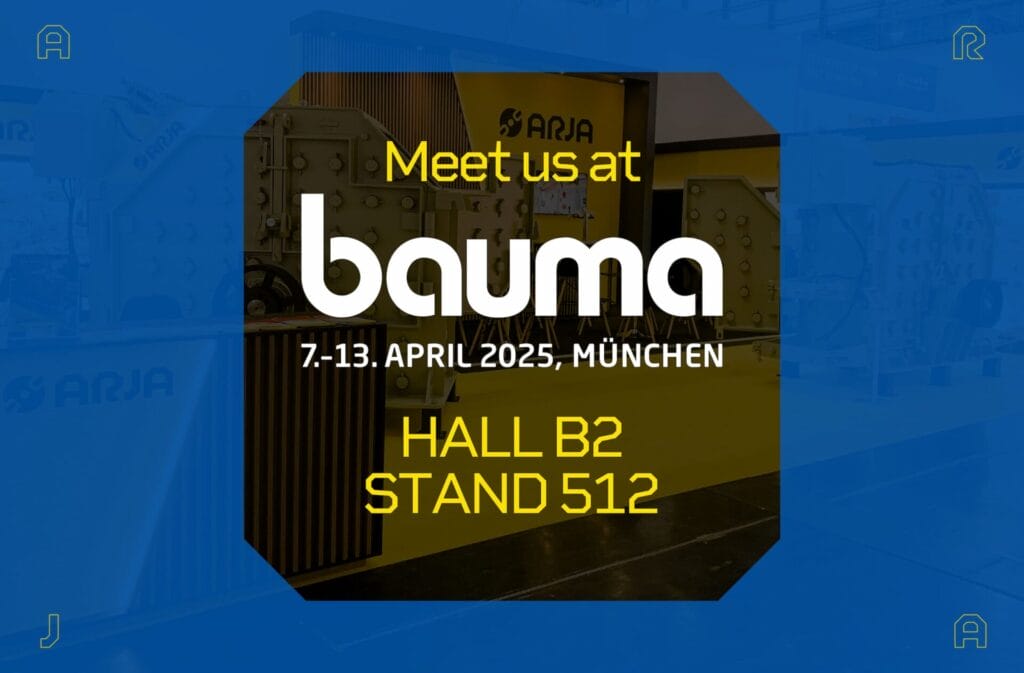In the aggregates industry, material reduction is much more than a technical step: it is the heart of the entire production process. And when we talk about horizontal shaft impact crushers (HSI), such as those from ARJA, there is one parameter that makes the difference between a high-quality aggregate and an ordinary product: the rotor’s linear velocity.
Beyond the installed power or the feed opening size, it is this velocity that determines particle size distribution, cubicity, and the machine’s wear level.
This is where the variable frequency drive (VFD) comes into play—an essential component to keep impact velocity (m/s) constant. At ARJA we rely on Power Electronics, a European leader in frequency drive solutions. Thanks to its reliability, our crushers ensure stable impact velocity even with fluctuations in feed or working conditions.
What is Linear Velocity?
Linear velocity, also called peripheral speed, indicates how fast the impact bars travel around the rotor’s circumference.
It is measured in meters per second (m/s) and is calculated using the formula:
v = π · D · n / 60
Where:
- D = rotor diameter (m)
- n = revolutions per minute (rpm)
- v = linear velocity (m/s)
In simple terms: the larger the rotor diameter or the faster it spins, the stronger the impact against the rock.
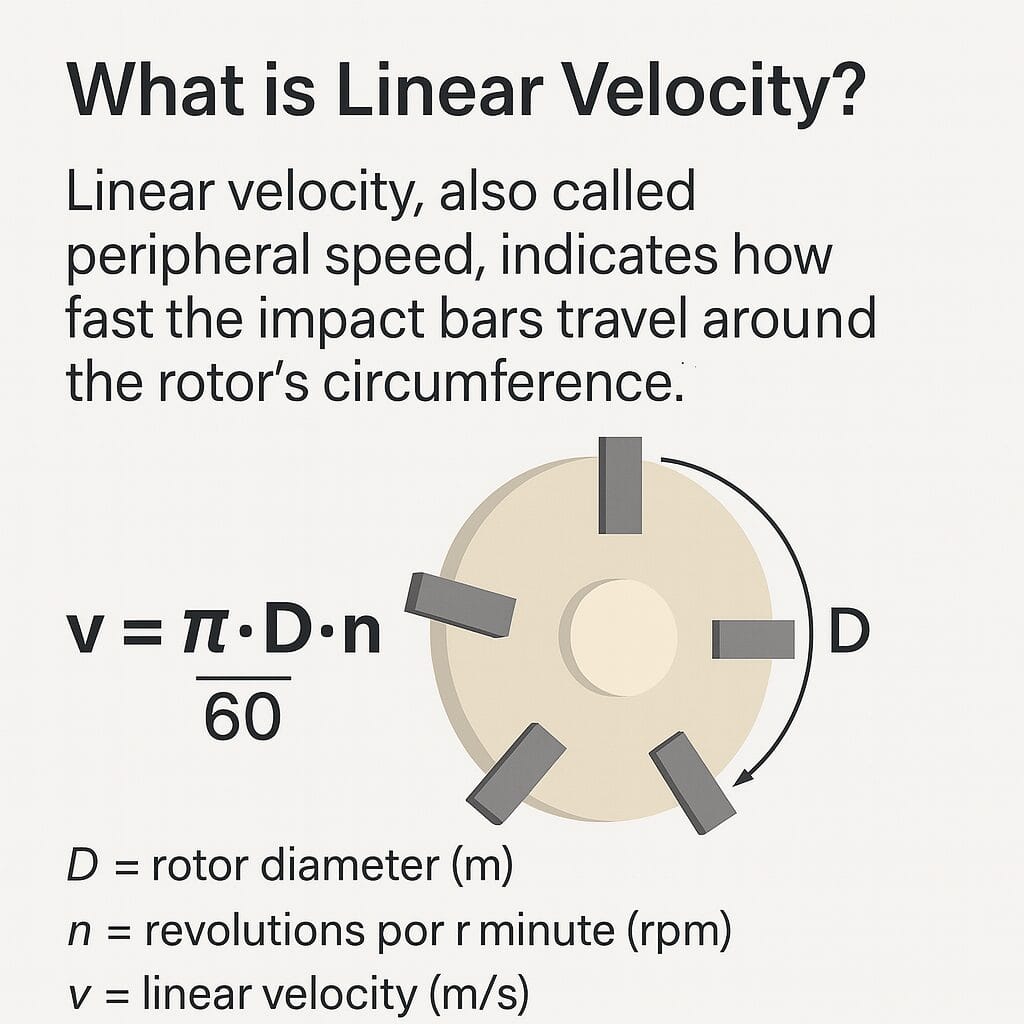
Speed Ranges in ARJA Crushers
Primary: 20 – 30 m/s
- Ideal for handling large rocks with moderate abrasiveness.
- Provides initial reduction without generating excess fines.
Secondary: 30 – 50 m/s
- Balance between capacity and cubicity.
- The VFD ensures impact velocity remains stable despite feed variations.
Tertiary: 50 – 70 m/s
- Prioritizes extreme cubicity and the production of manufactured sand.
- At such high speeds, the VFD is essential to achieve a uniform, top-quality product.
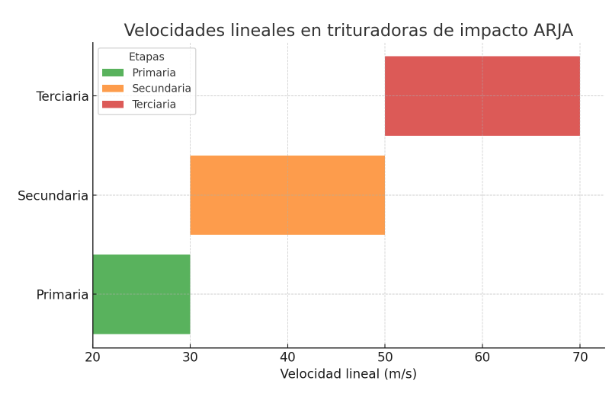
Relationship Between Speed, Cubicity, and Wear
- Low speeds (20–30 m/s): less cubic particles, fewer fines, and lower wear.
- Medium speeds (30–50 m/s): excellent balance between cubicity, productivity, and maintenance costs.
- High speeds (50–70 m/s): highly cubic, premium-quality sand and aggregates, at the cost of accelerated wear.
Key Factors in Choosing the Right Speed
Rock characteristics
- Limestone, gypsum, or softer materials → tolerate higher speeds.
- Granite and basalt → better to reduce speed to avoid excessive wear.
Process stage
- Primary: low speeds to manage large rocks.
- Secondary and tertiary: higher speeds are applied since material is already reduced.
Desired final product
- Base layers and fills → low speeds.
- Aggregates for concrete and asphalt → high speeds, always with a VFD to ensure consistency.
Conclusion
In ARJA impact crushers, the rotor’s linear velocity is not just a technical detail—it is the key to cubicity and efficiency:
- Adjust it properly according to the crushing stage.
- Keep it stable with a variable frequency drive.
- Balance cubicity, wear costs, and productivity.
All of this makes ARJA impactors a competitive and strategic solution for any modern aggregate plant.


